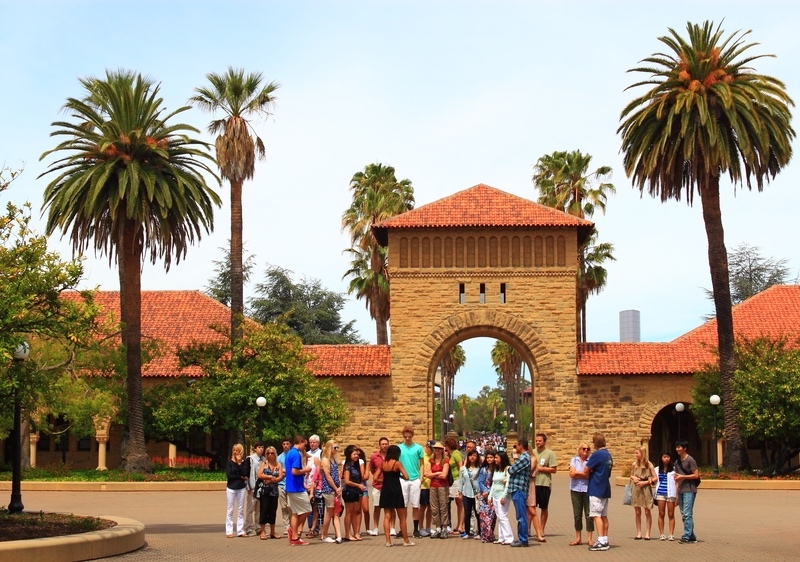Important Tips for College Visits

Here are some tips for college visits. While virtual tours and information sessions are available for most universities, no college search is truly complete without an in-person visit; there’s just no substitute for firsthand experience. Most colleges offer tours that include a general admissions information session and a walking tour of the campus.
Touring different campuses also provides a chance to compare campuses: small campus vs. big one, city school vs. rural, etc. Additionally, seeing the area around a college can make a big difference. After visiting numerous schools, a student will begin to get a feel for the environment in which they feel most comfortable. Plus, there are so many little details that may not be apparent online or in an admission presentation. Families get to know a college best by exploring it, peeking into lecture halls and dormitories, reading bulletin boards, and grabbing a bite to eat at the students’ favorite spot.
We recommend you start visits as early as sophomore year to make the process easier.
Of course, getting the most from a college visit requires preparation and planning. Here are our top tips for college visits:
1. Start local. Families within driving distance of a four-year college or university should start with a day trip. Even if your student has no desire to stay anywhere remotely close to home for school, visiting a local campus can provide a baseline from which they can compare all other schools. For more comparison choices, if your family goes on vacation this summer, consider visiting colleges in the area even if they are not in session.
2. Visit when school is in session, if possible. Colleges and high schools often have different break schedules. Visiting a college when classes are in session illuminates academic and student life as well as campus culture. At some colleges, most students are not on campus over the summer, so the best time to visit may be in the fall or spring. That said, a summer visit is better than no visit at all.
3. Plan your visit in advance. Call or go online (click “visit” on the admissions webpage) to reserve a space on the tour before you make your travel plans. Guided college tours start at specific times and meet in certain locations. Many tours have limits on the number of students and families they can accommodate each day. In addition, families may make an individual appointment with an admissions counselor and/or a financial aid advisor, if those are offered. Schedule time to eat on campus or nearby. If possible, arrange to meet a professor and/or attend a class. Have friends or acquaintances who attend the school? Ask them to meet you for a coffee or personal tour and take the opportunity to get their insight.
4. Do your research. Learn about the school before visiting. Students should gather an overview of the school and decide what they want to see. Check out their website and social media and see what places on or off campus get the most buzz. Is there a coffee shop where everyone goes to study? A building with impressive architecture? A particular department or a special facility to check out? Think about what your student should see. Student-athletes should visit the practice facilities, fields, and the weight room. Art majors should visit the studios. Everyone should visit the dorms, common campus areas, libraries, and places to eat. Students interested in a certain department, e.g., engineering or nursing should check to see if there is a separate tour available in addition to the general tour. Knowing about the school also helps when speaking with a college representative. Students should have questions, but not ones that can easily be answered on the website.
5. Make a list of questions to ask admissions staff, financial aid reps, faculty, and students. Thinking through questions before visiting will make the college search easier. You’re more likely to get the information you want to know. Plus, if the school requires a “Why Us” essay as part of their application, some of the information learned on the tour can be used to write this essay.
6. Ask about safety. Don’t shy away from asking about campus security. Some things to consider: a campus-wide alert system for emergencies on campus and in the surrounding area, “blue-light” telephones placed liberally throughout campus that are direct lines to campus police, well-lit pathways and facilities, campus police who patrol the campus regularly, and an official school security escort service who will accompany students at night—or anytime they feel unsafe—to places on campus and nearby. Also ask the guide about the frequency of shuttle buses running at night, who has access to dorms, and where the nearest emergency room or urgent care is. For campus safety statistics, visit https://ope.ed.gov/campussafety/#/
7. If you schedule a visit and can’t make it, let the college know.
Sometimes plans change. If a student signs up for a college tour and can’t make it, send an email or call the school to let them know.
8. Attend a virtual campus tour. Virtual visits are obviously not the same as visiting in person, yet it’s not always possible to visit every college. Most colleges have links to virtual campus tours on their website, or you can look for the school’s YouTube channel. There are also companies that offer online tours, including CampusReel, YouVisit, and The College Tour.
9. Bring the following items.
- Phone/camera. During your tour, take a lot of pictures. When comparing several schools later, photos can help jog your memory when it comes to the details—large and small. While colleges may seem unforgettable during a visit, by the third or fourth tour, they will start to blend together. Also consider using your phone to record group information sessions. Students oftentimes like to refer to a recording and its information while working on their application. During or right after a visit, make a note in your phone of important details pertaining to each school. In addition to numbers and facts, students should jot down their likes, dislikes, and feelings so they can remember which schools felt right to them and why. They should also write down the names of speakers they liked, details about the school, and programs they may want to research further. Bonus: A visit enables a student to drop details into any future interviews or correspondence with the admission office.
- Comfortable clothing and shoes. Campus tours involve a lot of walking and standing, so being comfortable is important. Check the weather before a visit, and bring items like an umbrella or sunscreen. It’s a good idea to carry water, too! A lightweight backpack is better than a purse, and it’s good for storing any college literature or swag while you walk around.
- An ID card or passport. Many schools request identification to confirm placement on a tour or to access certain buildings or areas of campus.
- Appreciation for adventure. Maintain a positive attitude. Stay open-minded. A school may not meet expectations, or it may surprise and exceed them.
- An open mind. Don’t let a rainy day or less-than-stellar tour guide turn you off. Conversely, don’t let a beautiful day or a stellar tour guide make up your mind for you. Take in the “full picture,” using the tour as one piece of information: will this campus nurture you academically and personally? Does it have the academic department and opportunities you need?
Enjoy the journey and remember these tips for college visits! Remember: each college visit is an opportunity to learn not only something about the school itself, but also about what a student is looking for academically, socially, and geographically.
For more information on college visits, or for help with applying to colleges, contact International College Counselors at http://www.internationalcollegecounselors.com or 1-954-414-9986.

